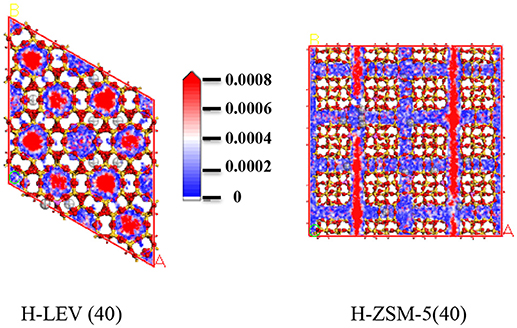

Comp Theor Polym Sci 8:229–246Įwald PP (1921) Die berechnung optischer und elektrostatisher gitterpotentiale. Sun H, Ren P, Fried J (1998) The COMPASS force field: parameterization and validation for phosphazenes. Sun H (1998) COMPASS: an Ab initio force-field optimized for condensed-phase applications overview with details on alkane and benzene compounds. Gee RH, Boyd RH (1995) Small penetrant diffusion in polybutadiene: a molecular dynamics simulation study. Luo M, Putnam ZA, Incavo J, Huang MY, McLaughlin JB, Krishnan S (2019) Molecular simulations and experimental characterization of fluorinated nitrile butadiene elastomers with low H 2S permeability. Khawaja M, Sutton AP, Mostofi AA (2017) Molecular simulation of gas solubility in nitrile butadiene rubber. Rutherford SW, Limmer DT, Smith MG, Honnell KG (2007) Gas transport in ethylenee propylenee diene (EPDM) elastomer: molecular simulation and experimental study. Li Y, Wu YP, Zhang LQ, Wang XJ, Ren DY, Wu SZ (2014) Molecular dynamics simulation of diffusion behavior of cyclohexane in natural rubber during reclamation. Whitley DM, Adolf DB (2012) Investigating the permeability of atmospheric gases in polyisobutylene membranes via computer simulation. Müller-Plathe F, Rogers SC, van Gunsteren WF (1993) Gas sorption and transport in polyisobutylene: equilibrium and nonequilibrium molecular dynamics simulations. Kucukpinar E, Doruker P (2006) Molecular simulations of gas transport in nitrile rubber and styrene butadiene rubber. Kucukpinar E, Doruker P (2003) Molecular simulations of small gas diffusion and solubility in copolymers of styrene. Sok RM, Berendsen HJC, van Gunsteren WF (1992) Molecular-dynamics simulation of the transport of small molecules across a polymer membrane. Tamai Y, Tanaka H, Nakanishi K (1994) Molecular simulation of permeation of small penetrants through membranes.

Comput Mater Sci 141:243–253Ĭharati SG, Stern SA (1998) Diffusion of gases in silicone polymers: molecular dynamics simulations. Tanis I, Brown D, Neyertz S, Heck R, Mercier R, Vaidya M, Ballaguet JP (2018) A comparison of pure and mixed-gas permeation of nitrogen and methane in 6FDA-based polyimides as studied by molecular dynamics simulations. Yang Q, Whiting WI (2018) Molecular-level insight of the differences in the diffusion and solubility of penetrants in polypropylene, poly(propylmethylsiloxane) and poly(4-methyl-2-pentyne). Venkat P (2018) Polyamides with phosphaphenanthrene skeleton and substituted triphenylamine for gas separation membranes. Lake LW, Mitchell RF (2006) in Drilling engineering: petroleum engineering handbook, Society of Petroleum Engineers, United States, p 245 Hanser Publishers, Munich Vienna New York, p 156 Hofmann W (1989) In rubber technology handbook second edn. Roff WJ, Scott JR (1971) In Fibres, films, plastics and rubbers: a handbook of common polymers. Wang H, Yang L, Rempel GL (2013) Homogeneous hydrogenation art of nitrile butadiene rubber: a review. Singha NK, Bhattacharjee S, Sivaram S (1997) Hydrogenation of diene elastomers, their properties and applications: a critical review.

The high permeabilities of H 2 and CO 2 are mainly resulted from the high diffusivity and solubility, respectively. The permeability calculated using diffusion and solubility coefficients decrease in the order P(H 2) > P(CO 2) > P(O 2) > P(CH 4) > P(N 2). The weak interaction between CH 4 with HNBR decreases S(CH 4), while the high compressibility and strong interaction between CO 2 with HNBR improve S(CO 2). Solubility coefficients of gas molecules in HNBR decrease in the sequence S(CO 2) > S(O 2) > S(CH 4) > S(N 2) > S(H 2), which are associated with the effective Lennard-Jones interaction constant ( ε/ k) apart from CH 4. The sorption isotherms for H 2, N 2, O 2 and CH 4 in HNBR fit the Henry model, while that of CO 2 matches well with dual sorption model. The decrease of D(CO 2) is due to the interaction between CO 2 and HNBR and the linear shape of CO 2. According to the simulation results, the diffusion coefficients of gas molecules in HNBR decrease in the penetrant order D(H 2) > D(O 2) > D(N 2) > D(CH 4) > D(CO 2), which are well correlated with effective penetrant diameter except for CO 2. Diffusion and sorption of five gases (H 2, N 2, O 2, CO 2, CH 4) in hydrogenated nitrile butadiene rubber (HNBR) have been investigated via molecular dynamics and grand canonical Monte Carlo (GCMC) simulations.


 0 kommentar(er)
0 kommentar(er)
